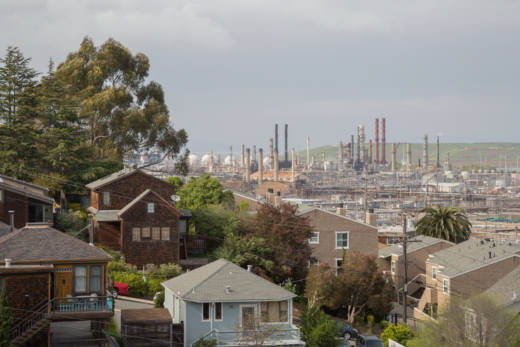John Gioia, the Contra Costa County supervisor who represents the area of the refinery and who sits on the Bay Area Air Quality Management District (BAAQMD) board, said late last week that the air district believes the abnormally high amounts of hydrogen sulfide detected by one of Chevron's air monitors after flaring operations caused the sulfurlike smell in San Francisco.
Gioia says the oil company will probably be fined by the air district for violating air quality standards and by Contra Costa County authorities for waiting 13 hours to report its first flaring incident.
Farrell is also unhappy about the oil company's late notification.
"That extreme delay is unacceptable while people's lives and safety are at risk," Farrell said. "The public deserves to know why they occurred in the first place, why there was a delay in reporting the flares, and what procedures are in place to protect against flaring."
Chevron and other local refineries emphasize that flaring is a highly regulated safety method used to relieve pressure inside their facilities.
The company has pushed back against the theory that malfunctions at its Richmond facility caused the San Francisco odor and maintains that it's working with air regulators.
"We continue to meet and cooperate with BAAQMD on their investigation," company spokeswoman Leah Casey said.
The air district, which is still investigating, has not told Chevron that the refinery is the source of the odors, according to Casey.
"As required by the Contra Costa Health Services, we have prepared and submitted three 72-hour reports based upon our investigation of the flaring events that took place on Dec. 27 and Dec. 28," Casey said in a statement. "This report includes a summary of data collected from air monitoring stations during the incidents and meteorological conditions. The data shows that emissions were well within applicable health standards."
The readings of hydrogen sulfide violated standards set by the air district, but they were not high enough to trigger a federal violation of air limits, according the U.S. Environmental Protection Agency.
In the meantime, Farrell is not the only one who wants answers. Local environmentalists want them as well. They were alarmed by the hydrogen sulfide readings -- which were so intense in one case that they maxed out Chevron's pollution monitoring equipment.
"We need to know much more about this disturbing incident to ensure this refinery doesn't continue endangering our air," said Hollin Kretzmann, an Oakland-based attorney at the Center for Biological Diversity.
"Public officials must hold Chevron accountable and require the giant oil company to track its dangerous air pollution throughout the Bay Area," Kretzmann said. "They should also consider whether this problem-prone facility should cut the risk of pollution by reducing operations."

